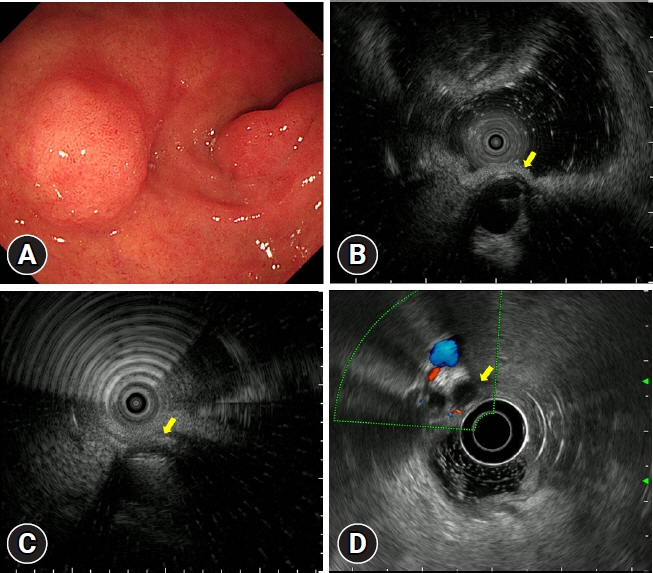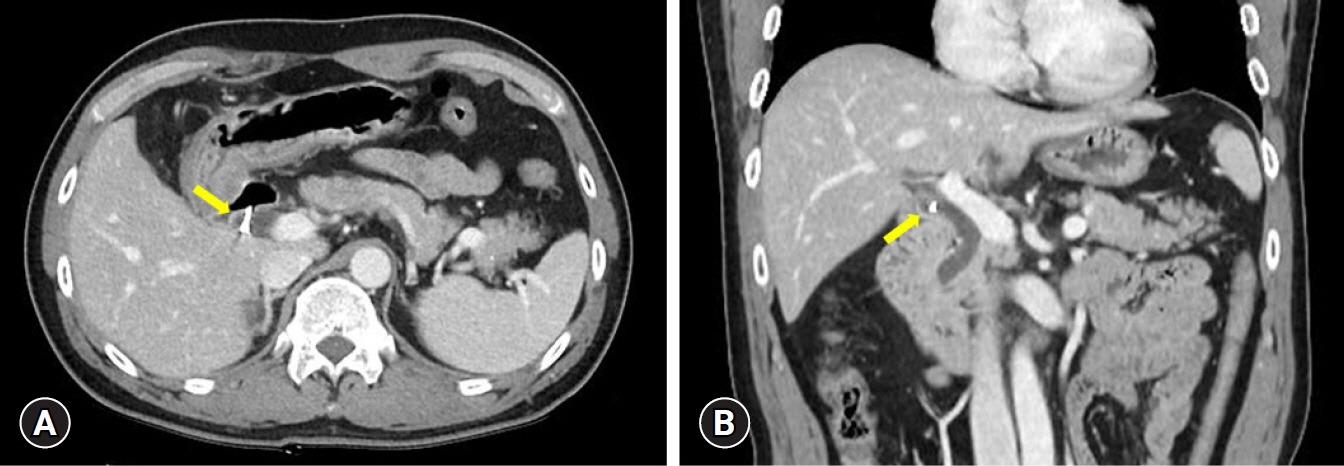Clin Endosc.
2024 Mar;57(2):268-269. 10.5946/ce.2023.275.
A remnant cystic duct presenting as a duodenal subepithelial tumor
- Affiliations
-
- 1Department of Internal Medicine, Pusan National University School of Medicine and Biomedical Research Institute, Pusan National University Hospital, Busan, Korea
- KMID: 2553765
- DOI: http://doi.org/10.5946/ce.2023.275
Figure
Reference
-
1. Eum JS, Kim GH, Park CH, et al. A remnant cystic duct cancer presenting as a duodenal submucosal tumor. Gastrointest Endosc. 2008; 67:975–976.2. Han SY, Chon HK, Kim SH, et al. Quality indicators of endoscopic ultrasound in the pancreatobiliary system: a brief review of current guidelines. Clin Endosc. 2024; 57:158–163.3. Ryou SH, Kim HJ. Successful removal of remnant cystic duct stump stone using single-operator cholangioscopy-guided electrohydraulic lithotripsy: two case reports. Clin Endosc. 2023; 56:375–380.
- Full Text Links
- Actions
-
Cited
- CITED
-
- Close
- Share
- Similar articles
-
- An Incidentally Detected Remnant Cystic Duct Carcinoma duringthe Evaluation of a Duodenal Submucosal Tumor (SMT) Lesion
- Clinical Significance of Extraluminal Compressions according to the Site of the Duodenum
- Laparoscopic Resection for the Treatment of Symptomatic Remnant Huge Cystic Duct with Stone after Laparoscopic Cholecystectomy
- Intraductal Papillary Mucinous Neoplasm with Associated Invasive Carcinoma Arising from Remnant Cystic Duct: A Case Report
- Laparoscopic Removal of a Retained Gallbladder with Remnant Cystic Duct Calculi



